By Sarah Willeman Doran
“Being human is about being in the right kinds of relationships,” said John A. Powell, author and civil rights scholar. He was speaking about social justice and the central importance of living from our heartfelt connection with other beings. At the most basic level, feeling genuine care helps us get along with each other. And from a larger perspective, the felt sense of connection—with ourselves, with others, with animals, with nature, with our conception of spirituality or the divine—is what brings meaning to our lives. At the end of life, when we look back, achievements and material things will matter much less than the quality of our relationships, our lived experiences of love and care.
In fact, the quality of our relationships affects not just our sense of meaning but also our psychological and physiological health. As the well-established field of Attachment Theory teaches, we need to form safe, caring bonds with other beings in order to have healthy nervous systems. Secure attachment creates neural pathways that are crucial for the functioning of our brains. In other words, our biology is intertwined with the natural yearnings of our heart. As mammals, we are born with an innate desire to connect. We yearn for experiences of trust and mutual understanding. Connected relationships are central to our wellbeing.

Natural Lifemanship: A Model for Building Connection
The field of trauma therapy offers insights that can help all of us heal and thrive. Trauma is notoriously difficult to treat, because it lives not only in our conscious mind but deeper in our nervous system, in parts of the brain responsible for basic survival. We can’t will our way—or talk our way—out of it. Instead, we need to understand and heal the functioning of the nervous system. Horse-assisted therapies can help people regulate those deep, surivival-focused brain regions and reintegrate the relational parts of the brain. Much of trauma happens in relationship, and trauma can most powerfully be healed in genuine, connected relationship with another.
Natural Lifemanship is a model of equine-assisted learning and psychotherapy that fosters healing through connected relationships. The model combines neurobiology with sound relationship principles. Clients learn the principles by working with horses and then can translate those principles to all other relationships in their lives. Natural Lifemanship heals and integrates the brain, develops self-awareness and self-regulation, and empowers people to build the kinds of connected relationships we all need.
I came to Natural Lifemanship from a background of psychology, horsemanship, and my own trauma history. As a rising young star, I lost my showjumping career to traumatic injuries. Although I never returned to the big sport, I fought my way back to being able to ride and work with horses again. In recent years I’ve raised and developed young horses. Natural Lifemanship has helped me to work with horses who’ve had difficult experiences. It has also helped me to heal myself, strengthen my relationships, and build transformative new ones.
Beyond just therapy, Natural Lifemanship is a way of living—a guiding mindset for how we relate to people, animals, ourselves, and the world around us.
The Neurobiology of Survival
The brain of a horse works similarly to the brain of a traumatized person: the lower, survival-focused brain regions are largely running the show. Horses’ brains are naturally built this way. Compared to humans, horses have a small neocortex, the region responsible for thinking. In herd life, only the lead mare needs to do much thinking. Horses are prey animals. They mainly need their fight-or-flight reflexes, and they need to follow the herd. Survival is the horse’s essential skill, and it’s governed by the lower brain.
With trauma, a person becomes stuck in those same lower brain regions. The fight-or-flight response actually has a third component: it’s fight, flight or freeze. When a person is stuck in these states, the survival regions of the brain get over-exercised, the nervous system becomes dysregulated, and the person has trouble regaining internal calm.
That over-exercising of the lower brain leads to two things, anatomically: it builds up the lower brain regions and simultaneously sacrifices connections to the upper brain regions, where thinking and emotional connection happen. There’s a use-it-or-lose-it phenomenon with brain pathways. A traumatized person has trouble with self-regulation because many of the cross-brain connections that allow us to consciously calm our survival reflexes have been lost—or in the case of childhood trauma, perhaps never created.
These primitive lower brain regions may help us survive in life-threatening situations, but they do not serve us well in most day-to-day experiences of modern life. When we’re stuck in survival mode long-term, it wreaks havoc on our health, happiness, and relationships.
From Surviving to Thriving
The good news is the brain has plasticity, and new connections can form. The most effective trauma therapy first regulates the lower brain and then engages the upper brain regions, thereby forming new pathways, helping all parts of the brain to integrate with each other for healthy functioning. The survival-focused brainstem needs to settle before higher brain regions like the limbic system and neocortex can be engaged in relationship-building activities. Therefore, understanding the brain is a crucial part of helping people heal. It can also make all the difference in communicating with others in our daily lives.
Natural Lifemanship 101: We need to understand which part of the brain a horse or person is responding or reacting from. Responding is associated with calm, integrated thinking, while reacting is habitual and reflexive. This understanding is important because if someone’s in survival mode and we try to reason with their thinking brain, they’re simply not there to receive what we say. A child having a meltdown won’t respond to reason and logic because they can’t. You can’t talk someone out of a panic attack. A scared horse cannot learn.
The Natural Lifemanship model offers specific tools to help regulate the lower brain regions. Certain types of sensory input and movement—namely, rhythmic and repetitive—have been found to soothe the nervous system. Think of a steady heartbeat, rocking a baby, taking a walk, watching snow fall, or listening to ocean waves. We can learn to use these regulating tools for ourselves, and we can offer them, in appropriate contexts, to help others settle.
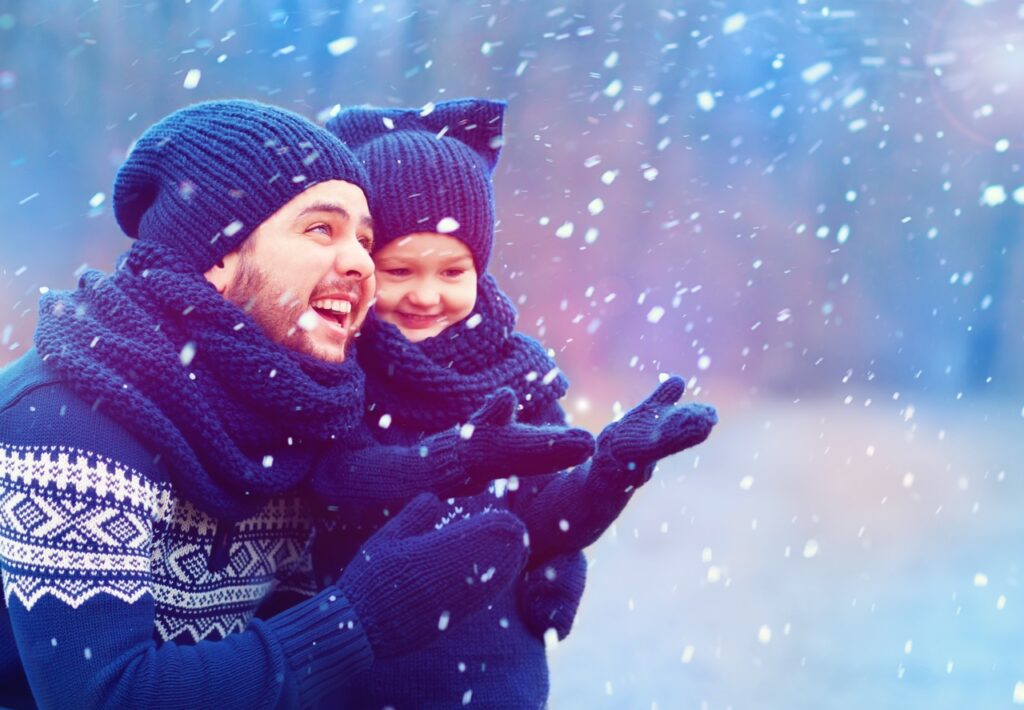
First and foremost, to connect with others we need to become aware of our own internal state. Horses instinctively sense our physiology and give us direct and honest feedback: if we’re dysregulated, we won’t feel like a safe person for the horse to connect with. Do the same outward gestures with a different internal state, and you’ll get a completely different response from the horse. Similarly, humans respond to these biological signals without even realizing it. When people react to us in ways we didn’t expect, the state of our nervous system can sometimes play a role.
On the positive side, when we develop self-awareness and self-regulation, we have a reassuring effect on those around us. This is partly because we feel the electromagnetic signals from each other’s hearts. When our heart is rhythmic and regulated—in a state called coherence that corresponds with a regulated brain—we broadcast calm and safety. To form healthy relationships, we need to be able to access this state. And the feeling of connection, in turn, helps us regulate; the cycle reinforces itself in a deeply healing way.
In the Natural Lifemanship model of therapy and learning, the client gradually builds a healthy, connected relationship with the horse by learning to self-regulate, make requests of the horse, recognize the horse’s signals, and respond appropriately. The horse is seen not a tool or a metaphor but as what he actually is: a real, living being with whom we can form a real relationship. Communication with a horse is visceral and genuine. When it goes well, there is simple, genuine pleasure. Connection is inherently rewarding for both human and horse.
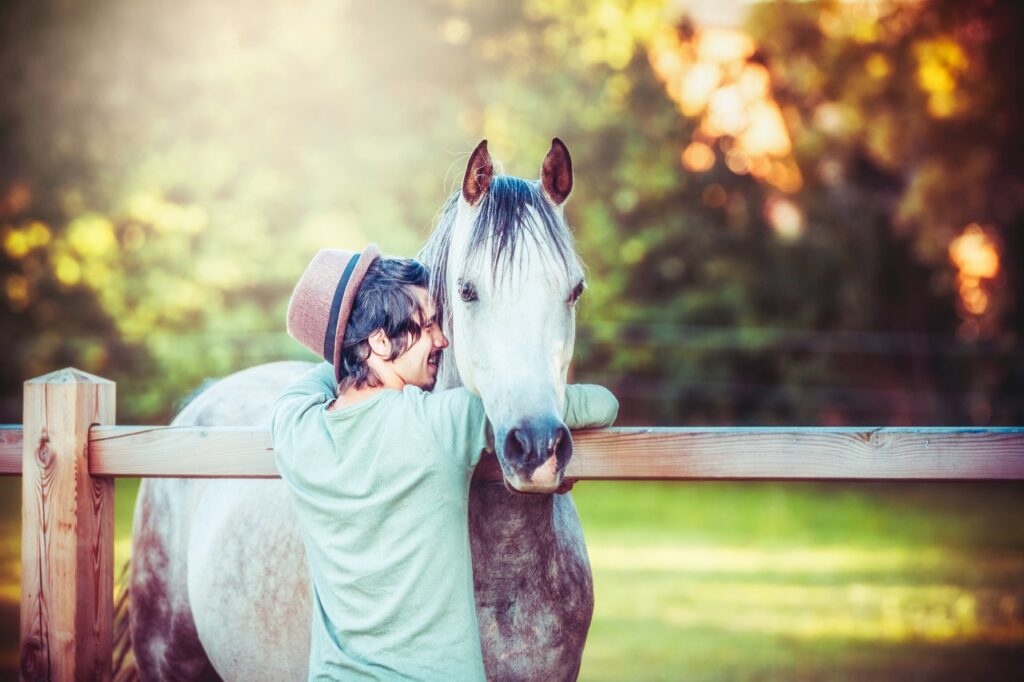
In this work, the principles learned while working with the horse apply to all other relationships, with both humans and animals. These sound relationship principles hold true across all contexts. Once we’ve internalized them, they can provide us with a source of inner guidance to help us navigate whatever situations arise.
Natural Lifemanship 101: A good principle is a good principle no matter where it is applied. In other words, whether the context is therapy, learning, horsemanship, parenting, marriage, or team building at work, the guiding ideas are the same. For example, self-awareness and self-regulation are crucial to the health of every relationship. And as you read each new principle introduced in this article, you might pause to consider how it applies to relationships you’ve experienced—and how it might offer guidance for navigating any challenges in your life.
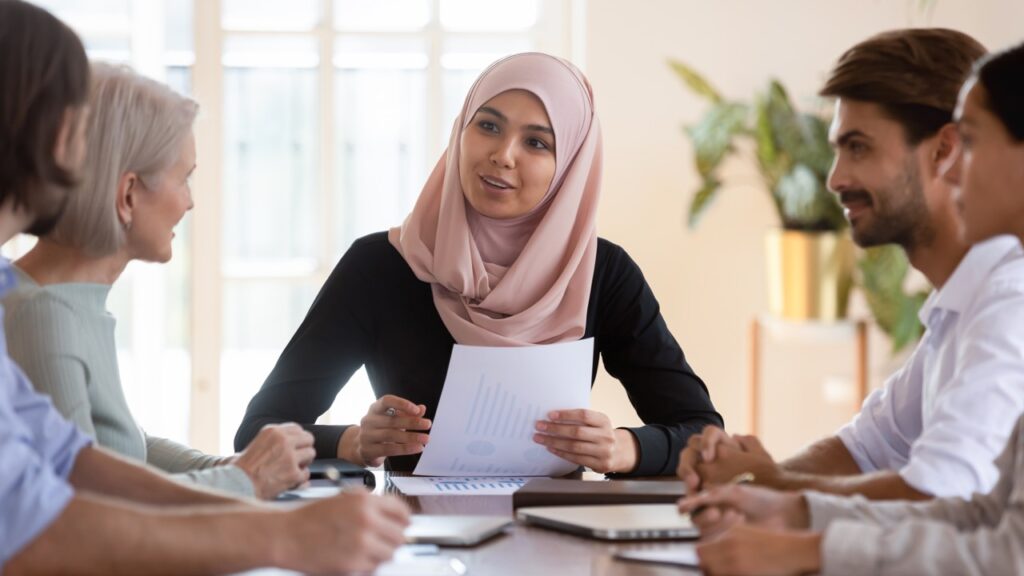
Nabo’s Story
The story of one horse in my care illustrates the transformative power of connection. I worked with him over the course of several months and saw his wellbeing and pattern of relating to humans completely change for the better. The principles of Natural Lifemanship guided my approach, in a way that went far beyond any traditional horsemanship training.
His name was Nabo. He was a shiny auburn bay with fine graceful limbs and a big, expressive eye. He arrived at my barn fearful about riding. At the previous barn, they said he had too much blood—too sensitive, too fast, too hard to slow down. It seemed to me they’d trained him with controlling methods, thereby pushing him into survival mode. When I led him to the mounting block, he’d tense his body and widen his eyes in alarm. The bottom line was, if he didn’t feel safe and at ease, I wasn’t going to get on his back against his will. We needed to start over.
Natural Lifemanship 101: If it’s not good for both, it’s eventually not good for either. Any relationship that involves control, manipulation, advantage-taking, or one-sidedness is not a healthy relationship. When one party’s needs and wishes are continually sacrificed, both parties lose in the end. If we harm others or allow ourselves to be harmed, we do not thrive. A relationship on those terms cannot succeed.
In healthy relationships, we choose to do what’s right for the relationship, and we ask the other to do the same. Compromises can happen, certainly. But on the whole, we honor the needs on both sides.
Nabo needed a new kind of relationship with humans—one in which his needs and preferences mattered and there was mutual trust. It was time to do the work of repair.
Every day, I’d take him to the round pen and let him loose—no halter, nothing on his body except wraps to protect his legs. Using my body energy, gestures, and voice, I began to communicate with him. By sending energy toward him in different ways, I asked him to follow me, or stand quietly with me, or move calmly around the edge while we stayed mutually attuned. In this setting, he didn’t feel controlled in any way. I was simply making requests, and he could choose how to respond. When he began to understand and choose to cooperate, it felt good to both of us. This was the beginning of connection. And his sense of freedom and choice was central to the process.

Natural Lifemanship 101: You don’t want to take away the other’s sense of choice. When you come across too forcefully, the other doesn’t feel safe. They might comply with you because they feel they have to, but that’s not healthy. Compliance is a submissive action; it’s reflexive and robotic, arising from the lower brain’s survival instinct. What you want instead is cooperation, which is willing and freely chosen, arising from a whole-brain process in which the other calmly figures out what to do. In other words, control is not connection; willing cooperation is.
Importantly, giving someone choice means they might not always do exactly what we want. And we need to understand that’s part of relationship-building. It doesn’t mean we give up on our request; usually it just means we keep working on it in a healthy way. This is what’s needed if we want to build a good relationship.
A crucial thing in my work with Nabo was that I needed to make sure not to get offended by any of the “wrong” answers he tried. If I made a request and he reacted in a way I didn’t want, that was okay; he was just trying to figure things out. I simply needed to maintain my own regulation and keep asking—and wait until he started to get it. Once he tried a “right” answer, I’d immediately release the pressure, telling him, Yes, that’s it! Releasing the pressure, in other words, means I’d stop making my request—in this case, usually by taking a step back, so that I was no longer gesturing or sending energy in his direction. It’s essential to release the pressure as soon as cooperation happens, because that’s how the other knows they’re doing the right thing.
Natural Lifemanship 101: Release the pressure when the other cooperates. This is crucial. Releasing the pressure lets the other feel that they’ve done the right thing. And conversely, think of how unpleasant it feels when you do the right thing and someone keeps nagging, holds a grudge over a misunderstanding, or doesn’t forgive a mistake. That makes for a bad relationship. As an everyday example, if you’ve asked your teenager repeatedly to take out the trash and they finally do it, just say thank you. If you continue to pester them because you’re upset it took too long, that doesn’t help. You can work on improving communication in the future, but for now, give them a break and appreciate that they chose to cooperate.
Similarly, with Nabo, I needed to be patient and reward every attempt at cooperation. He was mostly in his survival brain, and it would take some time to change that pattern.
At first, Nabo was flighty. He’d hear a car in the driveway and take off across the pen, high-headed, almost frantic. In these moments I knew he’d lost his awareness of me. He’d run away from the noise and then back toward it, wide-eyed, snorting, tail streaming. I had to make myself big and flap my arms, telling him, Hey, I’m here too, don’t run me over. I was asking him to respect my needs even though he was upset; as the NL principles teach, letting him do things that were harmful to me wouldn’t help the relationship either. Gradually, I’d ask him to settle down and bring his attention back to me. When he seemed regulated enough, I’d ask him to come stand with me. Finally he’d take a breath. His eye would soften. He’d nuzzle me with his muscular, whiskery lip.
One day I had him loose in the indoor arena, a larger space, and we heard a horse gallop across the stable yard. (It had obviously escaped from its humans). The sound triggered his sense of alarm, and he took off at a high-headed canter. But something was different this time. He kept glancing at me, checking in. I kept my energy quiet, trying to project a sense of calm. And then he seemed to make a decision. He slowed his pace, trotted over to me, and stopped. I hadn’t asked him to come to me yet, but he seemed to be asking: Could I stand with you and try to calm down? He seemed to realize he felt better that way. Connection felt good to both of us, and he had internalized that knowledge. He took a deep breath and stayed by me.
After that, he was different. When we were in the pen, he might spook at a noise, but he’d settle quickly. He was learning to self-regulate. The connection between us was helping him learn it. Soon we reached a point where he’d hardly spook at all. He wasn’t getting triggered anymore. We could maintain our connection while I asked him to follow me, stand still while I walked around him, or walk, trot, and canter around the pen, moving between the paces as I raised or lowered my body energy. We were so attuned all I had to do was shift my gaze from his barrel (where my leg would be if I were riding) to his haunches (which he knew meant I wanted him to follow me) and he’d immediately come to me.
It was a warm, companionable feeling, experienced deep in the core of my body. Out there in the sun and wind, with this powerful, delicate, shining horse, communicating with energy alone: my heart felt tender and alive. A sense of peace and trust resonated between us. This was the sweet spot, the ongoing goal of our work: this powerful felt sense of connection, the key to overcoming Nabo’s fears.
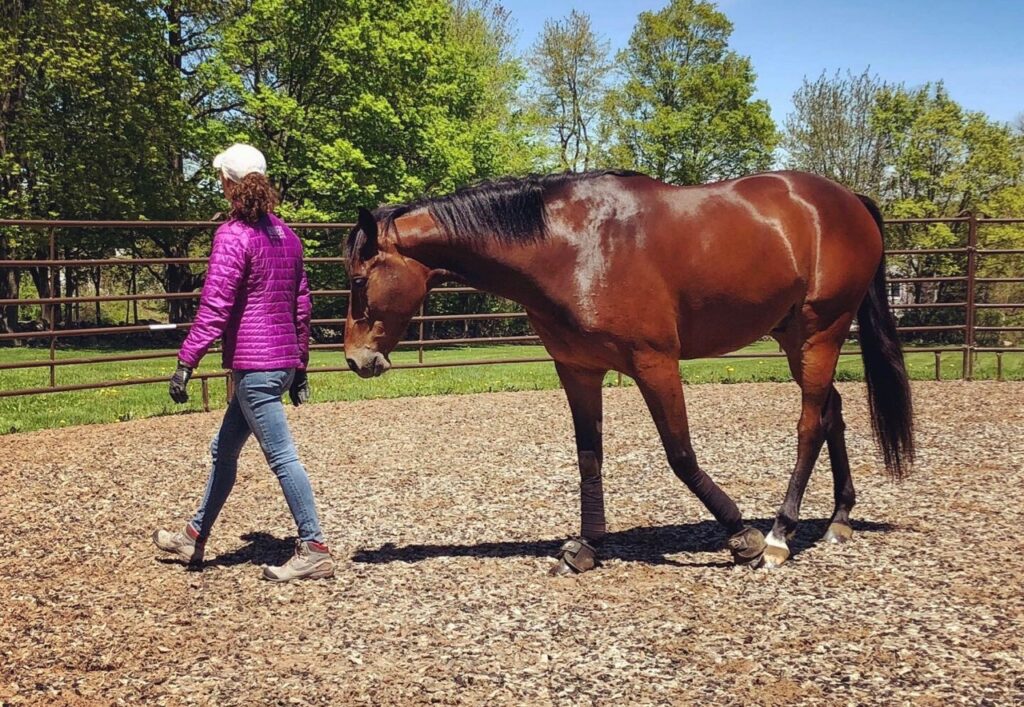
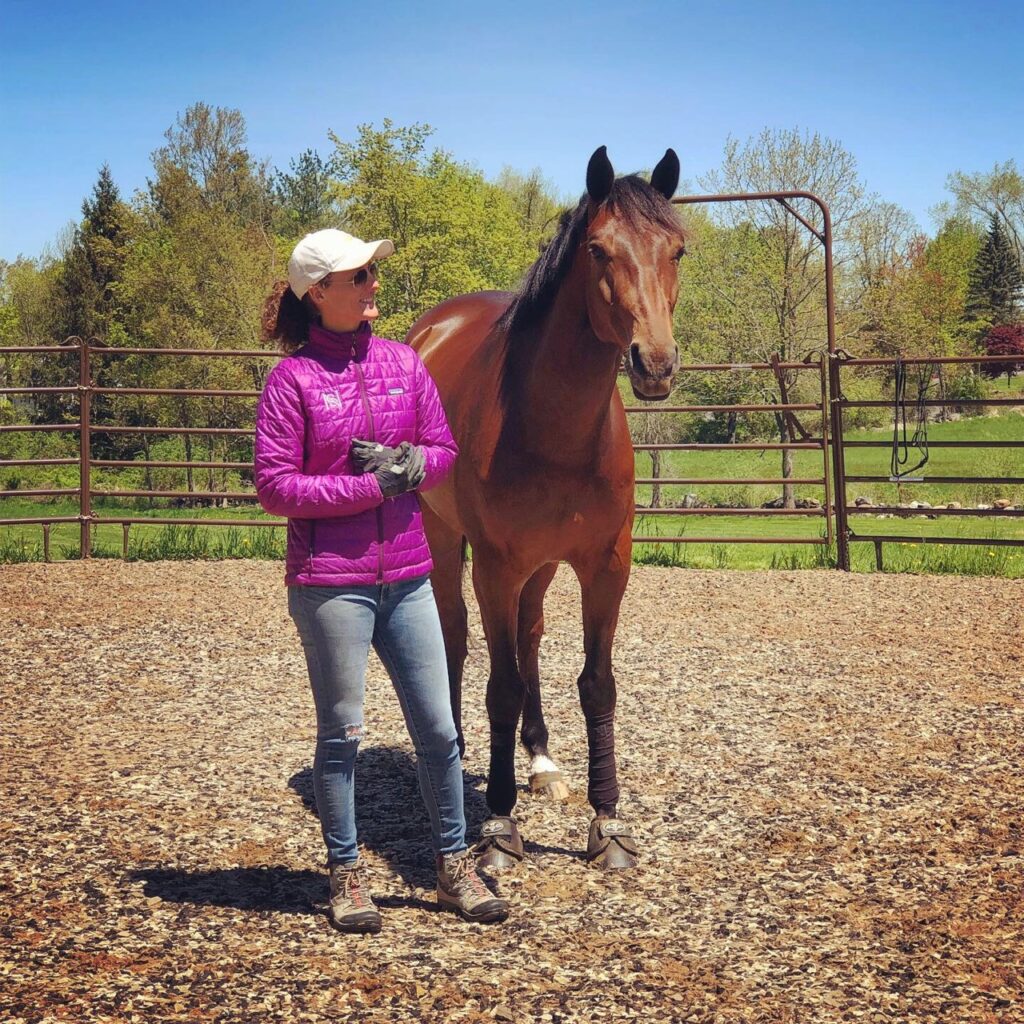
Natural Lifemanship 101: Regardless of the task or activity, connection is always the goal. Connection is what it’s all about, the basis for all successful relationships. In any setting, if we get too task-focused, we tend to become tense and disconnected from the relational parts of our brain, which can undermine our success. On the other hand, when we learn to stay in tune with how we’re relating to others, our relationships improve and we get better outcomes in whatever we’re doing.
With Nabo, the next step was to work through his fear about riding. Now that we had such a beautiful connection, we could begin to approach this challenge. My task was not simply to get on his back, but rather to maintain our connection and build trust around riding, so he could learn to feel comfortable. I would need to break the process down into pieces he could manage.
I knew the mounting block would be a trigger for him. First, I brought the block into our round pen so we could start to work through his fearful associations. When he saw it, he immediately tensed and lost our connection. He was back down in his survival brain. Gently, gradually, I asked him to reconnect with me—to settle and bring his thinking brain back online—and practice what he knew. I wasn’t trying to use the block to get onto his back. I simply wanted him to learn he could still feel safe and connected, even with the mounting block nearby.
He began to learn the mounting block wouldn’t lead to scary things. Still, in order not to overwhelm him, I removed the block from the pen and introduced the idea of riding in a different way. I’d ask him to follow me to the fence, then I’d stand on the bottom rail, pressing my hand on his back. If he tensed, I waited for him to relax and then stepped down—releasing the pressure, telling him, Yes, that’s right, you’re doing well. Throughout all this, he still got to choose. He was free to walk away from me; I used no force or tools of control. If he wasn’t comfortable, I wasn’t getting on. I asked him to work with me, to see if we could sort out his fears together. We had to trust each other. Only when he stayed relaxed would I step one rail higher or add weight to his back. In this way, we progressed to the point where I could climb on bareback while he remained completely at ease.
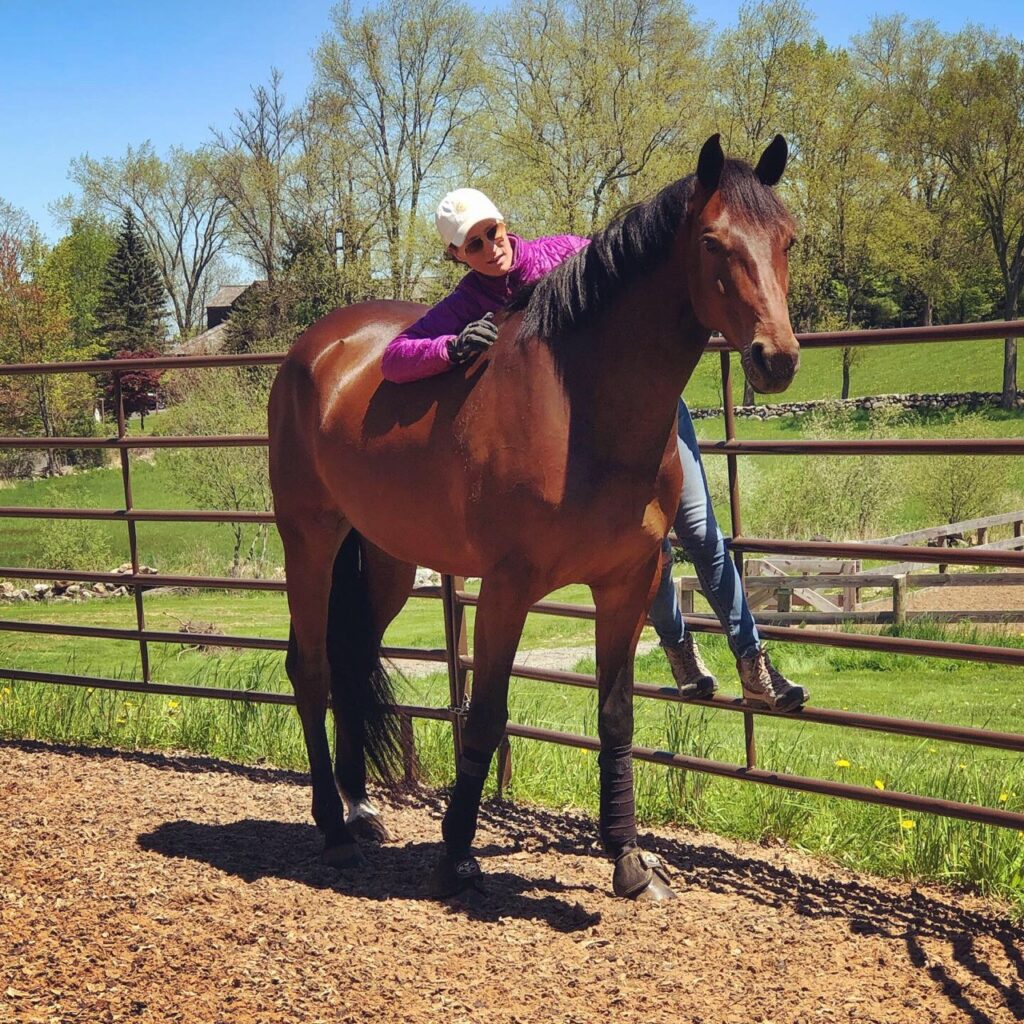
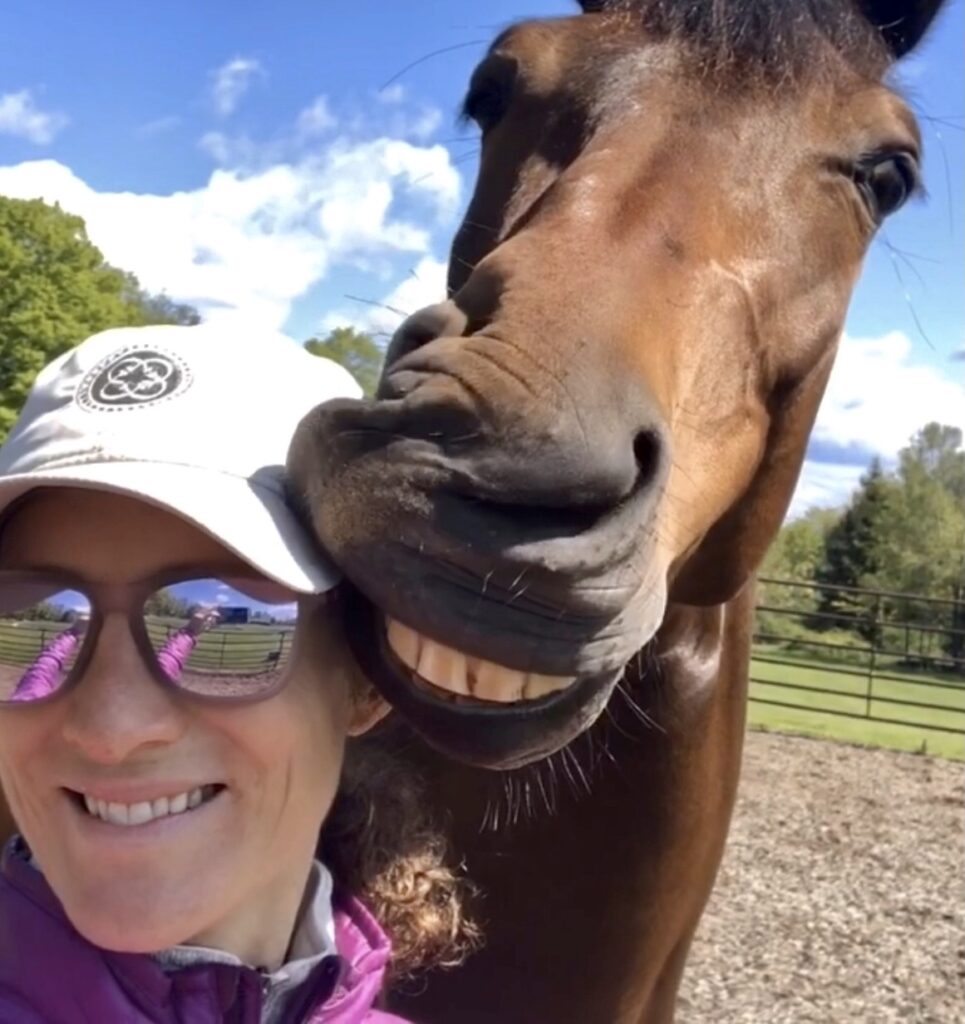
The connection we formed changed Nabo’s life. He was no longer traumatized and fearful. He could enjoy being with his human. He could express a need and find that it mattered. And he could learn to do the right thing for the relationship, too. His demeanor and behavior changed because his brain changed. As he learned a new way of relating, he built new neuropathways that allowed him to regulate and connect.
Connection in Everyday Life
A connected relationship is one in which both parties choose to do what’s right for the relationship, and those choices are made freely and willingly. To reach this level of attunement, both parties need to make requests and listen to each other. Connection is built; it doesn’t just magically happen. You can’t fake a true, deep, safe connection. It has to be real. When we experience genuine connection, we feel it viscerally. It’s an internal, felt sense: that warmth, presence, peace and attunement; the feeling of being fully alive and at home in the moment and with each other. That’s what Nabo and I both experienced as we built our relationship together; that feeling itself was a much greater reward than any carrots or sugar cubes I could have fed him. And I can still feel our connection now, when I think back on the memory.
Natural Lifemanship 101: In healthy relationships, the felt sense of connection remains whether the relationship partner is physically present or not. We can cultivate that internal felt sense so that it stays with us even across distance. When we’re truly healthy, we carry the feeling within us rather than depending on the constant reassurance of physical proximity.

Working in the round pen, many people and horses feel more secure when they’re next to each other. Often people find it hard to ask a horse to walk away and circle the edge of the pen. They might say they “feel bad” when asking the horse for physical space, as if they’re being cruel. Some horses react with discomfort as well. But in order to have strong relationships, we need our sense of connection to remain whether we’re near or far. We need to feel secure in our care for each other. Just the short distance of the round pen’s space builds this capacity. We can feel deeply connected even when we’re apart.
Connection across distance applies to many aspects of our daily lives. For example, in a healthy relationship, spouses need to feel connected with each other even when one is traveling. Children just starting school may feel fearful about separating from a parent—but ideally, children learn to carry the feeling of the bond within them, even when they’re away from parents during the day. My Natural Lifemanship colleague recently got a note from her three-year-old daughter that said, “I really miss you today. I’m gonna love you when I’m at school.” These words, to me, reflect a parent consciously working with her child to develop an internal sense of connection.

The idea of connection across distance also applies to grief. Death is, in a way, the ultimate distance. When we lose someone we love, touching into our internal felt sense of connection with that person can help us heal. We can learn to feel the tender warmth, the deepest comfort of our hearts, even when someone is gone. Grief is still enormously painful, but the feeling of connection inside us cannot be taken away. This is essentially what it means to carry someone in our hearts: the blessings of love they brought to our life are forever part of us.
Spirituality is another form of connection across distance. When we connect with the divine, with nature, with source energy—whichever has meaning to us—we are attuned with something greater than ourselves, an abstract presence we cannot see. This kind of connection is a capacity we can cultivate through practice. It’s also a feeling that can naturally arise when we gaze across the mountains, watch a brilliant sunset, or witness an act of kindness. Something great and beautiful touches our spirit in these moments. Instead of feeling separate and alone, we feel part of something larger. If we bring our awareness to that natural feeling, we can deepen our visceral sense of it—a memory in our body and heart of the power of connection.

All these forms of connection, near and far, afford opportunities for us to develop this internal, felt sense. When we experience deep connection in one relationship, our capacity to cultivate it in others grows.
Natural Lifemanship 101: The way you do anything is the way you do everything. Specifically, our relational patterns are consistent across contexts. When we step into the round pen with a horse, our relational patterns will play out. This also means that whatever we learn through building connection in one setting is what we need to learn. Noticing our own patterns is the first step.
And importantly, as we move through the process of building stronger, more connected relationships, there is another essential teaching we need to keep in mind: mistakes and repair are a crucial part of relationship-building. In other words, we need to give ourselves and others some grace. Despite our best intentions, we will make mistakes. And that’s okay. A relationship that can’t survive imperfection is not a healthy or worthwhile relationship. In fact, mistakes and repair can make our relationships stronger.
Natural Lifemanship 101: We need to trust in our ability to repair, rather than trying to be perfect. Fear of mistakes hinders our ability to relate and thrive. Instead, we need to know we’re safe to be human. Mistakes and repair are part of building strong relationships. Moments of small, accidental damage and disconnection can deepen our relationships when we respond in a certain way: by hearing each other’s needs and making amends. This is the essence of feeling seen and cared for. In this way, we learn to understand and nurture each other through the ever-changing experience of life.
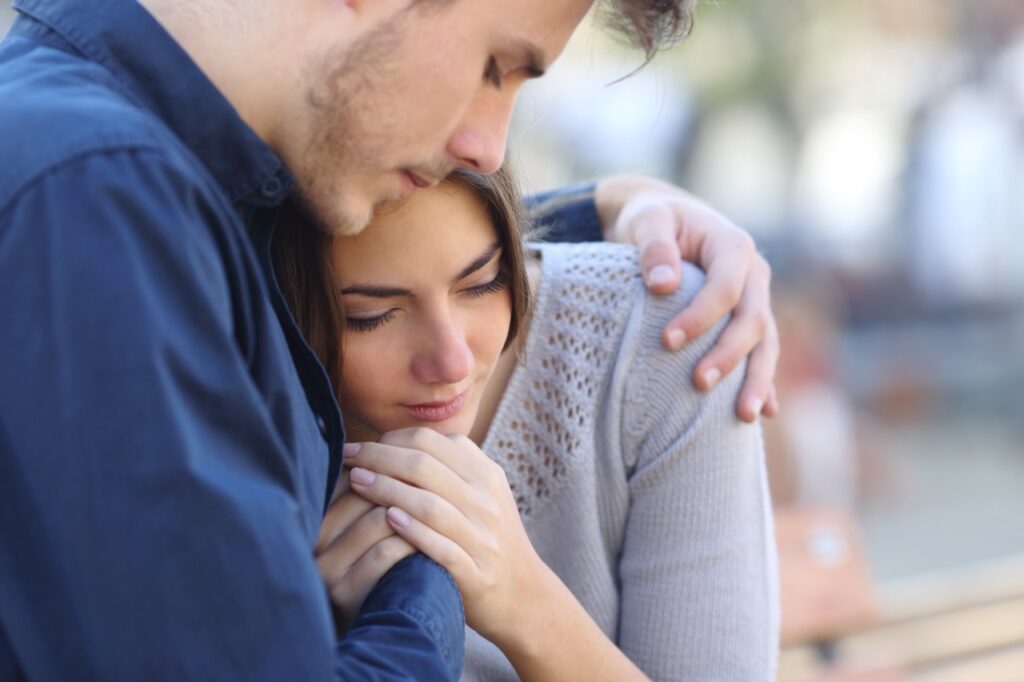
Global Repair
Feeling connected brings out our natural empathy and kindness. In today’s world, we need this work more than ever. Modern society suffers from an epidemic of disconnection. We fight with each other and mistreat the planet. We lose ourselves in devices and cannot even be present in the moment. Many people feel isolated and afraid, living with chronic stress. We’re spending too much time in survival mode.
Connection is the antidote. The work of healing is not just for people with severe trauma; it’s for all of us. We can all benefit from deepening self-awareness and self-regulation. We can all learn to strengthen our relationships with self, others, and the natural world.
For a society living in disconnection, it’s difficult to feel our shared humanity or interdependence with nature. On the other hand, if we can cultivate our own ability to connect, the healing effect ripples outward through everyone in our life. We learn to treat each other with care when we feel genuine connection with each other’s humanness and vulnerability. We learn to treat the earth with respect when we experience the genuine healing power of connection with nature.
We are interconnected with all of life. To fully understand that truth, we need to know the warmth and aliveness of the internal felt sense of connection. We need to carry it with us, at the core of our way of being in the world.
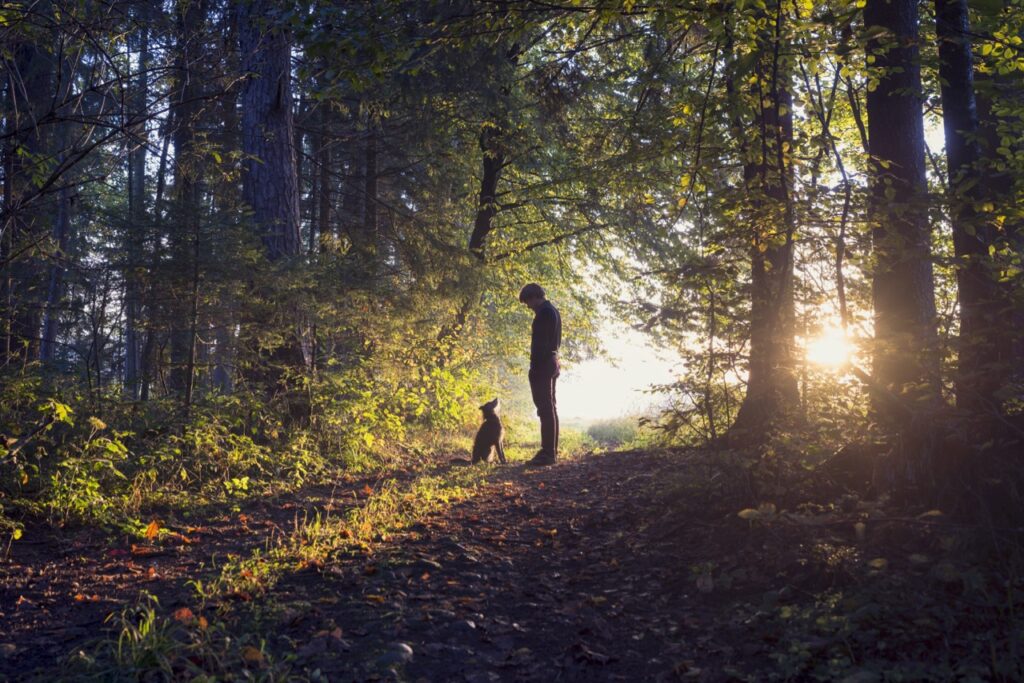
You can see video of Sarah working with Nabo here:
Natural Lifemanship With Nabokov, Part 1
Natural Lifemanship With Nabokov, Part 2
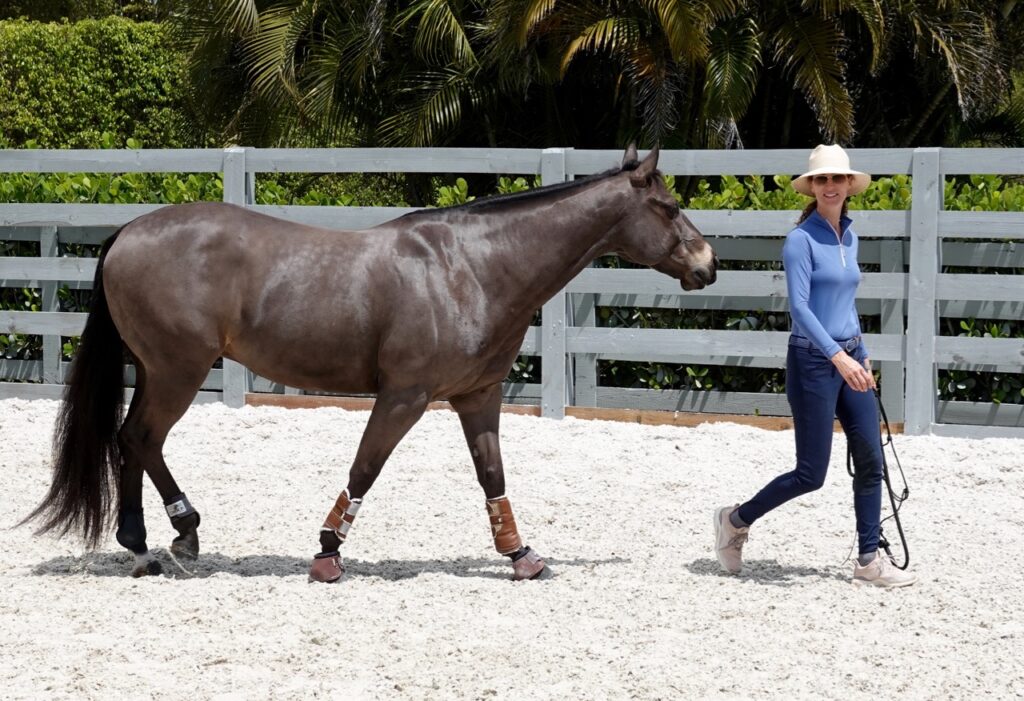
An earlier version of this article originally appeared in the EcoTheo Review.
Feature photo by The Book, LLC, of Sarah and Hurricane in 2007. He was her Grand Prix jumping partner and soul-mate horse. He died in 2014.
Author bio:
Sarah Willeman Doran is a life coach, meditation teacher, and Natural Lifemanship practitioner. A former Grand Prix showjumping rider, she also breeds and develops young horses. She is the author of the blog Grappa Lane, about conscious living, horses, and psychology. She lives in Colorado.

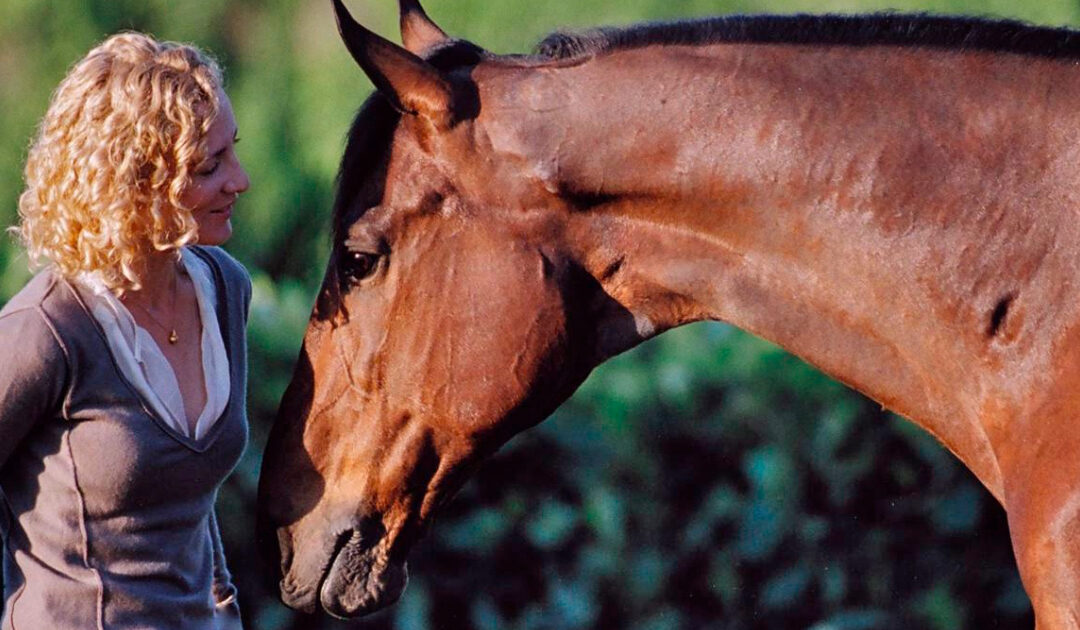
Recent Comments